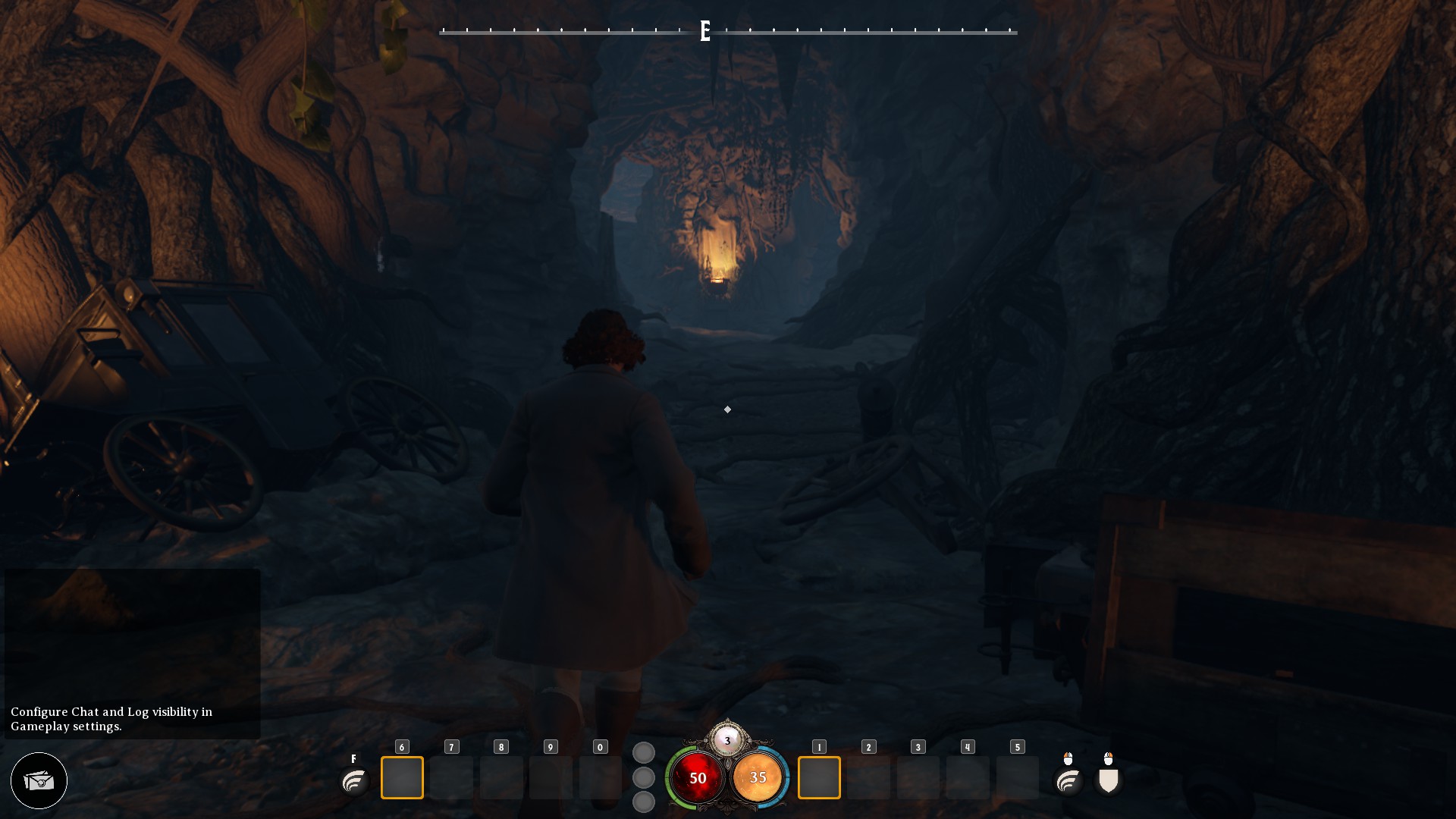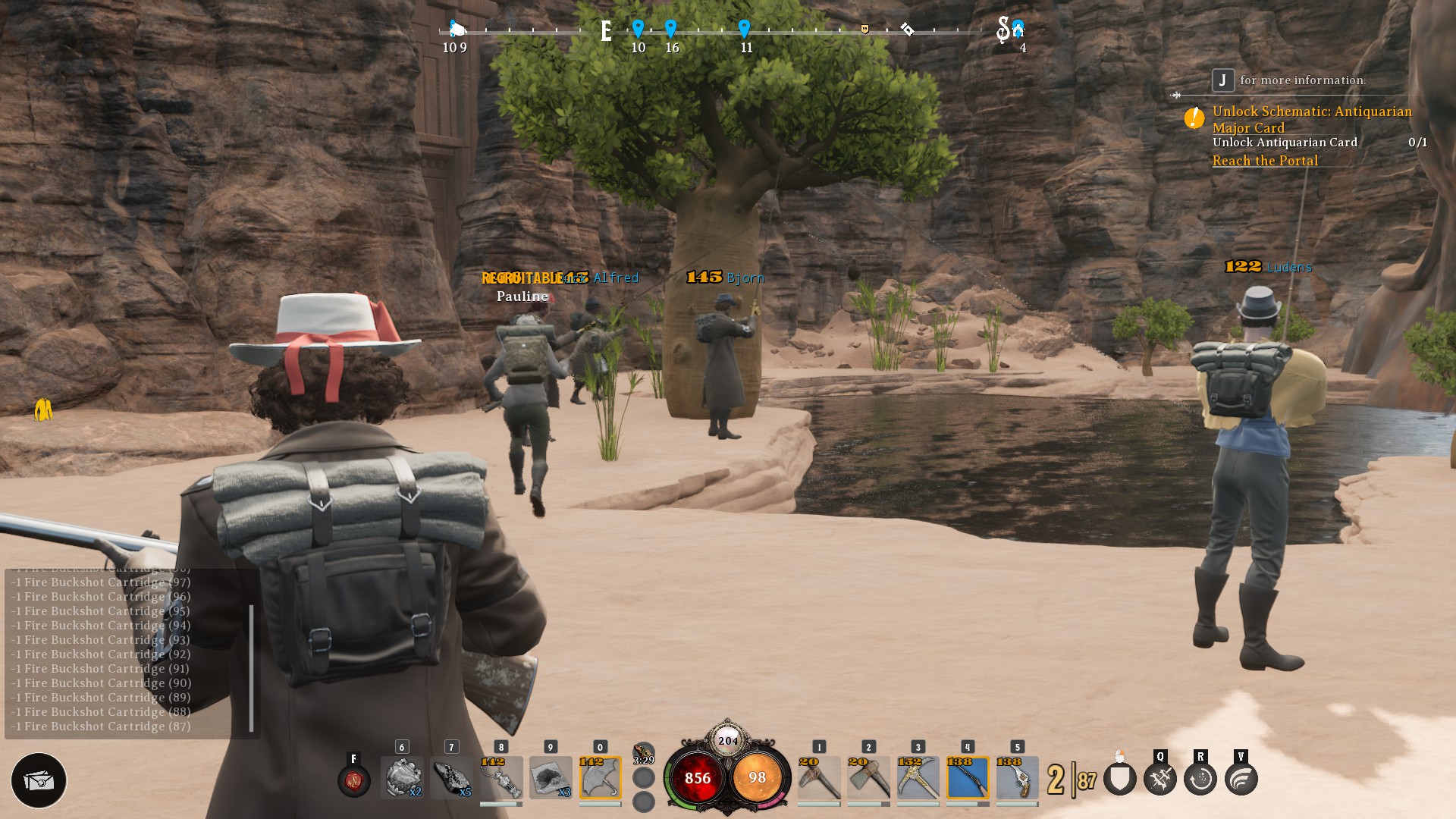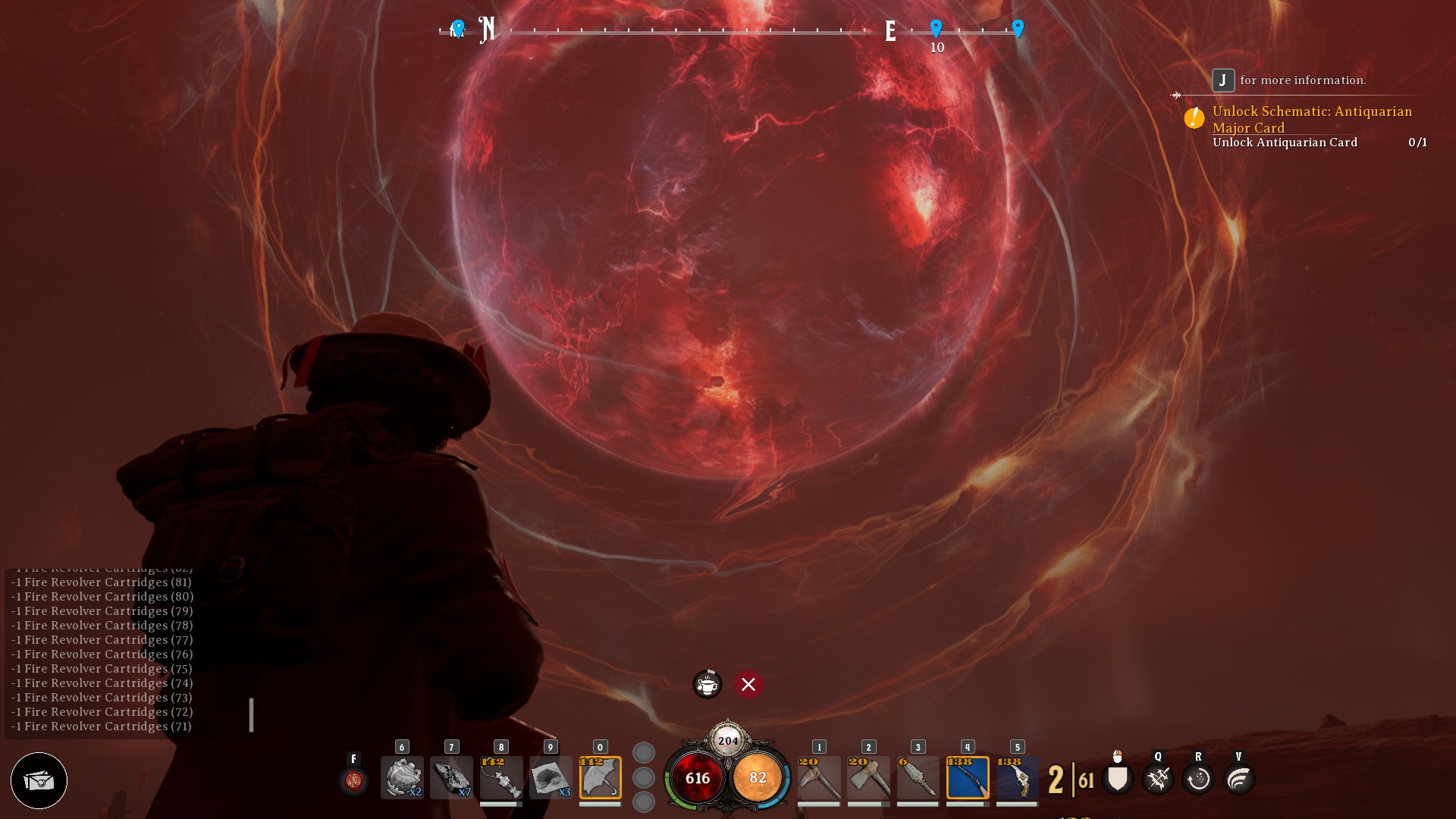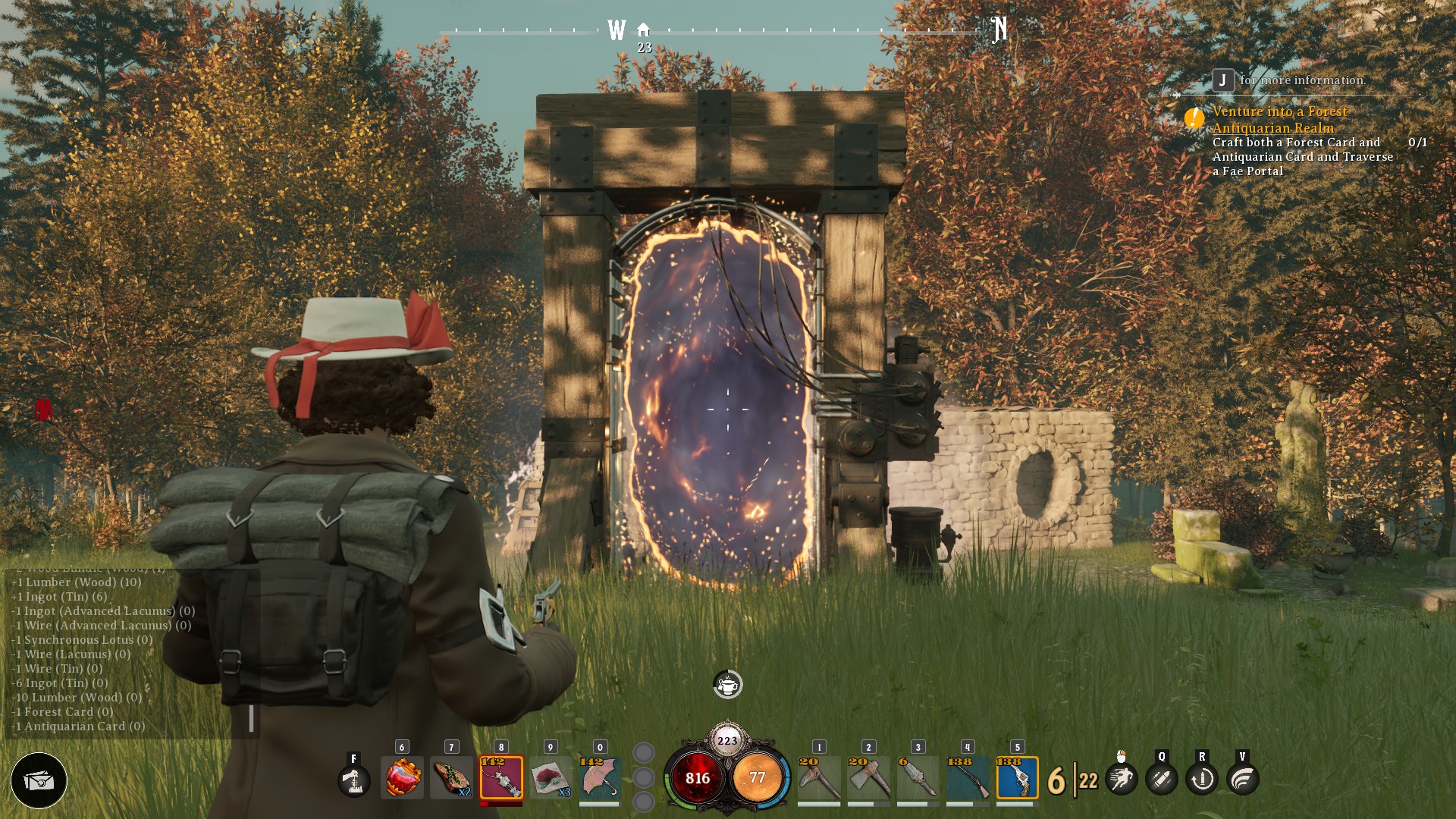
Our regular readers know that the survival sandbox sub-genre is suddenly getting very crowded in very short order, which means that the upcoming gaslamp survivalbox Nightingale has to make some noise in order to be heard above the din.
I was granted the opportunity to dive into an early build of the game for a few days, play with members of the development team, and speak with Inflexion Games CEO Aaryn Flynn, all of which helped me come to the initial thought that while Nightingale has some wrinkles that need to be ironed out, its setting and major multiversal hooks could be enough to make for an engrossing sandbox experience.

At its core, Nightingale is all about adventuring across dimensions and realms, moving from simple survival to thriving to actively adventuring for new challenges, and expanding until it reaches a climax at a location known as The Watch – a larger scale social hub where players can meet and group up. Throughout the story, players will be greeted by historical and fictional characters of all sorts, while the narrative has been planned out for a fair stretch according to Flynn. And yes, all of this progress in terms of gameplay and narrative will be in right from early access.
On the subject of narrative and setting, the opening portions of my time in the game tried to instill a sense of urgency as I was in a cave being led by the voice of the fae Puck and hearing tortured screams as reality was tearing apart. This served as the usual tutorial in terms of basics, but it also set the game’s scene and gave me an early little taste of survival and realmwalking both, with my character moving through the game’s three base biomes in turn, each time granting me insight into the dangers and potential.
Finally I was given the chance to select what biome would be my safe zone – aka an abeyance realm – to start the move towards unlocking realms without Puck’s help. I chose the forest realm mostly because I have a hard time knowing why anyone would want to live in a hot desert or poisonous swamp, but the options are there for those who want them.

It’s at this point that the game drops right into familiar territory. The typical survival sandbox progression hallmarks of materials, tools, crafting benches, and recipes are all represented. This might be a deterrent for those who don’t like these games, but after having a taste of moving through realms, I found the drive to open portals myself was more than enough of a carrot on a stick for me to chase, and getting to that point felt like a little watershed moment.
Cards are the primary method of realm travel, as followers of the game’s development already know, with portals opening by playing a realm card that determines biome and creatures and a major card that effectively sets the challenge level of the world you’re walking in to. Once you’re inside of an opened world, the setting can be modified further as you play combinations of 50 minor cards at a realmic transmutor to confer map-wide changes like lowered gravity and more frequent monsters. There’s even a trickster card that randomly changes the materials obtained from gathering.
It’s these minor cards that Flynn says bring some of the most variance and unique features of Nightingale. The team will naturally be putting out more cards of all types in the future, but he expressed his excitement at seeing what crazy combinations players come up with and promised that even more spicy cards could come in, leading me to think that the team will worry about fun first over balance, though obviously adjustments will likely be made if things near exploit territory.
Cards aren’t immediately easy to come by, I should point out; they’re crafted from recipes that are found or bought from traders, and once they’re used, they’re gone, though mercifully escaping to the abeyance realm will still allow you to use a portal and return to a generated world until you play new realm and major cards. Again, this will either be a fascinating chase or a survivalbox hindrance depending on your point of view of the entire sub-genre.

But what about multiplayer? I was able to get a taste of that too with a guided walk through one of the developer’s realms alongside several others in the press event. We were taken to a gorgeous estate built completely with craftable items, outfitted with some significantly improved weapons and items, and even invited to check out the use of magic, which happens either through augmenting spells into tools or firing elementally charged ammunition in the case of firearms.
After that, we walked through a desert realm set to a higher stage of difficulty to fight through a tower and reach the realmic transmutor at the top. Group play in Nightingale can skew a bit chaotic, especially as my frame rate started to take a dip, but I also was enjoying the madness… as well as the shotgun that I had brought along, which was probably one of the most satisfying shotguns I’ve ever fired in a video game. The group preview ended with a fight against the humbaba apex monster that has been the focus of the game’s trailers, but I wasn’t able to join in on account of running into some technical issues.
Multiplayer sounds like it’s the apex activity once players unlock the aforementioned Watch location, an instance hub where up to 30 players can meet to show off their fancy fits, trade items by dropping them on the ground, and take up additional missions like the apex monster fights or vault delves. Flynn likened this to the Tower of the Destiny series in terms of its general design, though he also assured me there would be no bait-and-switch for those who would rather play solo or in small groups; for example, cards that access vaults for solo players can be purchased at the Watch.

Flynn also expressed his eagerness to perhaps expand group activity in the opposite side of the scale as well, saying he would be open to the idea of adding larger group activities, but only if that’s the sort of thing that the players respond to. Throughout my time with him, I noticed that gathering feedback and being responsive to players seems to be a common goal for the team, and the team’s first priority is to address bugs and make things as smooth as possible before adding more.
This leads me to those technical issues I brought up earlier, which were some of the biggest roadblocks that sprang up in front of myself and my fellow colleagues. While we were playing on a build of Nightingale that was a month older than the early access build, I would be doing everyone a disservice if I didn’t point out how absolutely resource-intensive this game feels, even when over spec. My machine fell somewhere in-between the recommended and high specs, but I was suffering from multiple crashes, errors about video memory, and sometimes unplayable framerates. Nightingale is demanding.
Even so, I also do have to point out that the devs did their best to react, putting worth to Flynn’s words as they quickly created a Google doc to collect bug reports and issues from those of us in the press build, followed shortly after by a little patch that appeared to help out with some of my personal performance problems. Still, this is going to be an early access game where things will go wrong and break, so I don’t blame those who would ultimately be gun-shy about diving in. Even Flynn appreciated how players buying early access is a “social contract,” as he put it.

Ultimately, Nightingale really seems to be doing just enough different and unique to make the tried-and-true survivalbox gaming experience feel rewarding and fresh. When I asked him about how he felt about Nightingale’s chances in the current sub-genre groundswell, Flynn talked about how nobody has a playbook for how these kinds of games should be made, meaning that creativity and distinct features are wide open. And it’s possible that this one has put out some new tricks to make it score.















